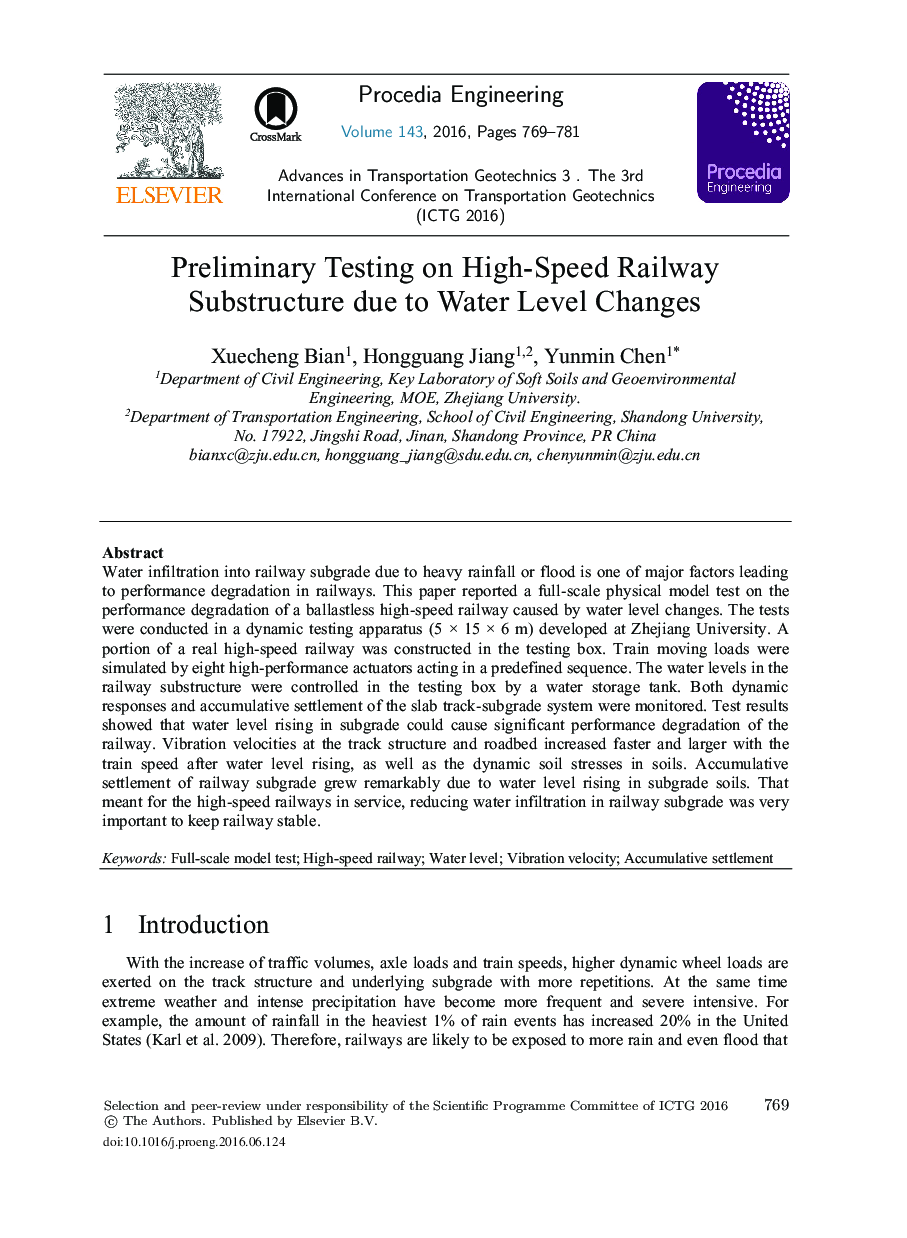| Article ID | Journal | Published Year | Pages | File Type |
|---|---|---|---|---|
| 854279 | Procedia Engineering | 2016 | 13 Pages |
Water infiltration into railway subgrade due to heavy rainfall or flood is one of major factors leading to performance degradation in railways. This paper reported a full-scale physical model test on the performance degradation of a ballastless high-speed railway caused by water level changes. The tests were conducted in a dynamic testing apparatus (5 × 15 × 6 m) developed at Zhejiang University. A portion of a real high-speed railway was constructed in the testing box. Train moving loads were simulated by eight high-performance actuators acting in a predefined sequence. The water levels in the railway substructure were controlled in the testing box by a water storage tank. Both dynamic responses and accumulative settlement of the slab track-subgrade system were monitored. Test results showed that water level rising in subgrade could cause significant performance degradation of the railway. Vibration velocities at the track structure and roadbed increased faster and larger with the train speed after water level rising, as well as the dynamic soil stresses in soils. Accumulative settlement of railway subgrade grew remarkably due to water level rising in subgrade soils. That meant for the high-speed railways in service, reducing water infiltration in railway subgrade was very important to keep railway stable.
